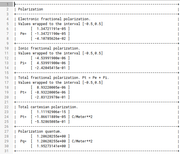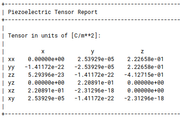1
General Questions and Answers / piezoeletric tensor
« on: April 28, 2025, 09:34 »
In the manual of piezoelectric tensor, if you check the optimized strained geometry in the orthorhombic structure and calculate, the result is similar to the reference. Also, when I calculated in the orthorhombic structure, I was able to get a value similar to the reference. However, I wonder why the value that comes out is different from the reference when I check the optimized strained geometry in the hexagonal structure. I would appreciate it if you could tell me the reason. Expert.





